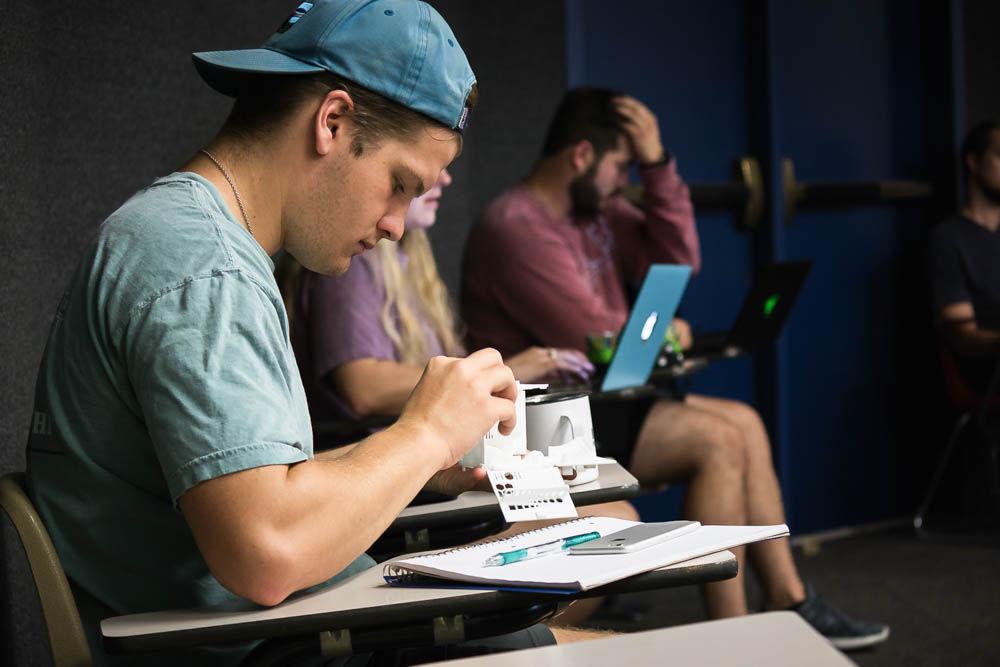On Jan. 23, 2013, Texas A&M University announced the vision of acquiring 25,000 engineering students by the year 2025. Now, four years later, the program is focused on retaining students and making sure they graduate with a transformational and quality education.
This initiative has four guided principles, as mentioned in the press release from 2013. They are: increasing accessibility to engineering education at all levels, transforming the educational experience to better prepare students to engage in, meeting the future needs of the engineering marketplace and delivering engineering education in a cost-effective and affordable manner.
“We are answering the call to increase the number of engineers that graduate,” N.K. Anand, executive associate dean of engineering, said. “Not just the number alone, but to award them a transformational education experience so they can be functional for the next four decades or more.”
Katherine Banks, vice chancellor and dean of of engineering, said the logic behind 25 by 25 was to help meet the need of engineering graduates.
“The state and the nation is in need of more engineers and STEM graduates to keep our economy strong and enhance the quality of life for our citizens,” Banks said. “Since our program averages 4.5 years to graduation, the majority of first 25 by 25 graduates will finish this academic year.”
Wahibah Hannan, general engineering freshman, said that although she was not aware of this program before she applied, it doesn’t change her decision because she knows it is a great program and believes this new initiative will not impact her education.
“I think that eventually whenever you are looking at such a huge number, they are going to be forced to make sure the quality of their education is also there, along with the quantity,” Hannan said.
As the College of Science and the College of Engineering have grown, Banks said that additional funding has been provided to ensure there remains a good student-to-faculty ratio.
“The colleges impacted by our growth, primarily the college of science, have been given funds to hire new faculty to support additional first year classes,” Banks said. “The majority of our required classes after the first year are taught by engineering professors.”
With the increasing number of engineers, the concern of maintaining a quality education for the students rises.
“Quality, quality quality. The dean and I have made a public commitment when we launched the program [that] if we are unable to keep up the quality or if we don’t have proper resources, we will suspend the growth,” Anand said.
A factor into this initiative is that it not only includes those engineering students in College Station, but also those at Texas A&M-Galveston, those at the academies and all other A&M locations, according to Mark Weichold, the associate dean of academic affairs and executive director for Halliburton Global Engineering Program.
“Another thing to consider is that to get to the 25,000 mark, Dean Banks is counting on retaining our students in engineering at a much higher rate than in the past,” Weichold said. “50 percent of the gross at the undergraduate level is simply from keeping the student who entered as a freshman all the way through the program.”
Anand said that to expand on those numbers, 50 percent will be from retention, 49 percent academies, 9 percent from the online masters program, 9 percent from undergraduate College Station students and 3 percent graduate students.
Although there has been a 20 percent growth in the number of degrees awarded from 2013 to 2016, it is not a result of the 25 by 25 initiative. Anand said it’s natural growth, and the results of 25 by 25 will show up in the coming year.
25 by 25 four years in
September 6, 2017
Photo by Photo by Cristian Aguirre
Mechanical engineering students are shown the precision achievable by new 3D printing methods.
0
Donate to The Battalion
Your donation will support the student journalists of Texas A&M University - College Station. Your contribution will allow us to purchase equipment and cover our annual website hosting costs.
More to Discover








